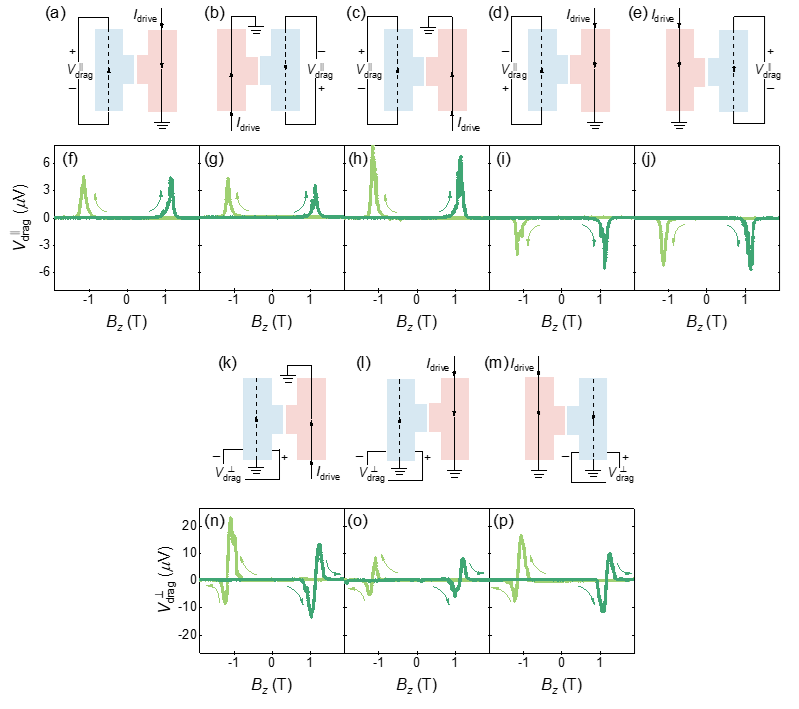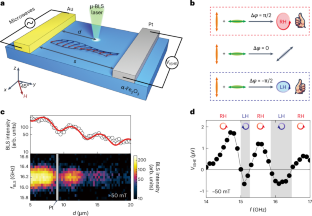2025-04-24 北京大学(PKU)

Figure 1. Non-reciprocity of longitudinal and transverse Coulomb drag. (a–e) Circuit setups for longitudinal drag; (f–j) data at 20 mK. (k–m) Setups for transverse drag; (n–p) corresponding measurements.
<関連情報>
- https://newsen.pku.edu.cn/news_events/news/research/14870.html
- https://www.nature.com/articles/s41467-025-58401-5
チェルン絶縁体間の非相反クーロン抗力 Non-reciprocal Coulomb drag between Chern insulators
Yu Fu,Yu Huang & Qing Lin He
Nature Communications Published:29 March 2025
DOI:https://doi.org/10.1038/s41467-025-58401-5
Abstract
Coulomb interaction between two closely spaced but electrically isolated conductors can induce a voltage in one of them upon feeding a current into the other. This effect has been widely studied in nonmagnetic strongly interacting systems and historically interpreted in terms of momentum and energy exchanges, which thus complies with Onsager’s reciprocity. Here we report the non-reciprocal Coulomb drag observed between two ferromagnetic Chern insulators that host quantum anomalous Hall effects. By measurements with current and circuit reversals, we discovered strong drag signals in both the longitudinal and transverse directions which violate Onsager’s reciprocity. These drag signals only emerge when the Chern insulator is in a multidomain state. Combined with the nonlinear I−V characteristics and power-law temperature dependence, this drag is attributed to the rectifications of mesoscopic fluctuations and quantum shot noise as well as the current cumulant. The drag signals are accompanied by strong magnetic fluctuations, highlighting the role played by magnetic dynamics. The present study expands the Coulomb drag to the realm of magnetic topological systems.



